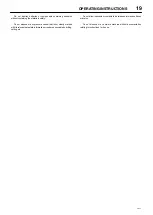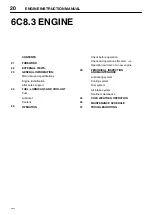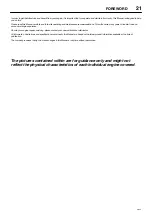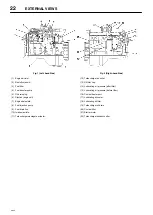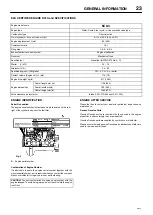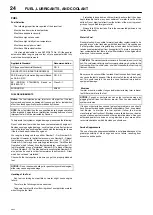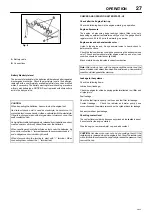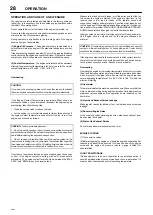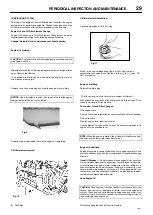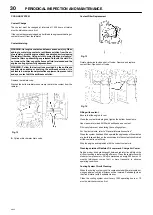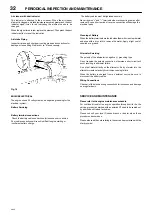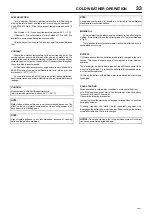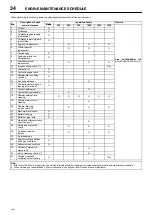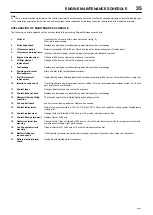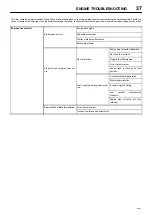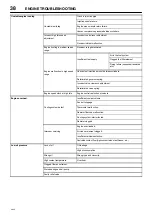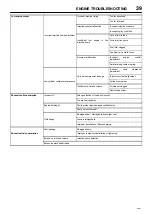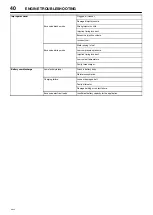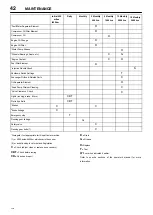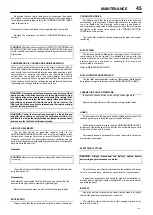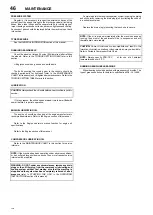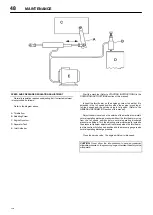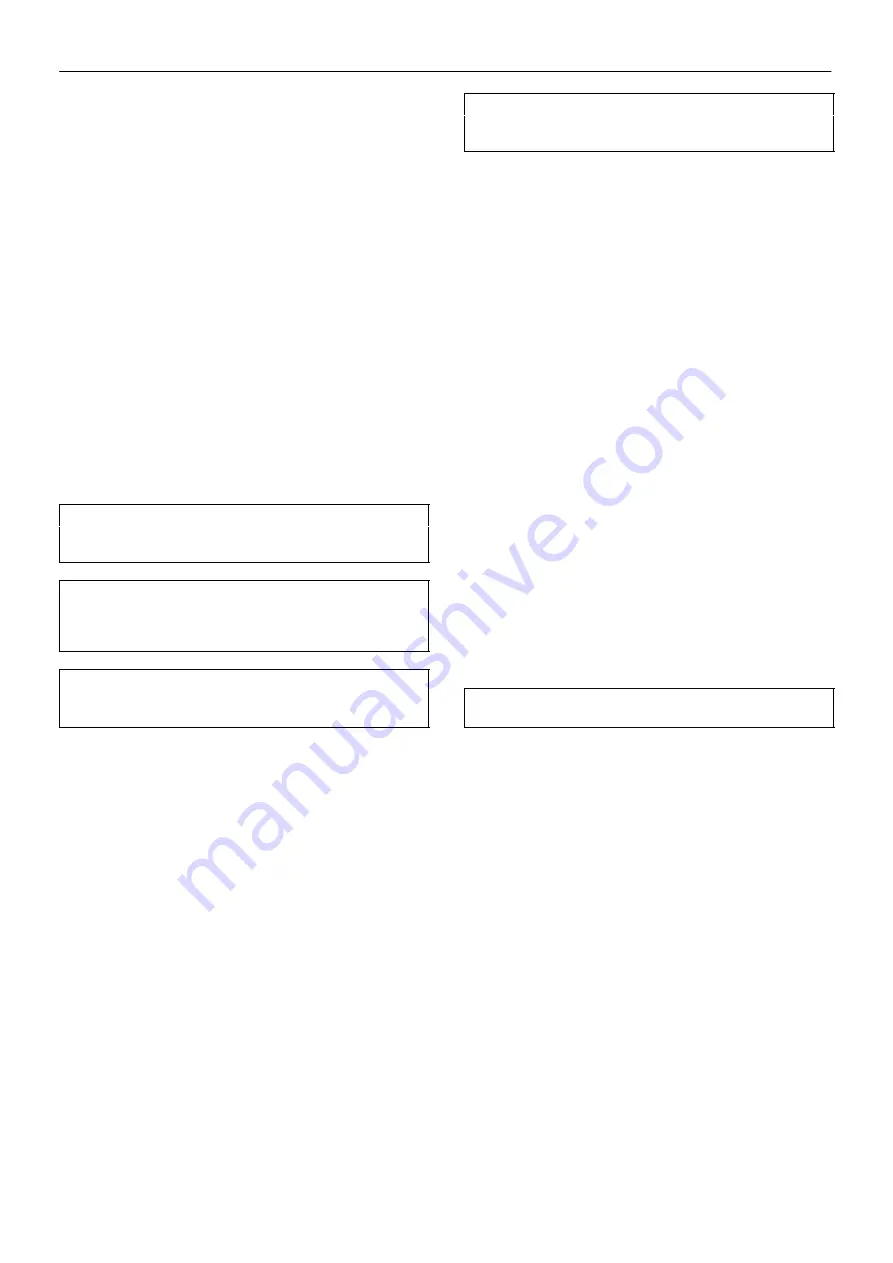
33
COLD WEATHER OPERATION
9/235
FUEL SELECTION
In cold weather, the fuel might freeze resulting in difficult engine
starting; therefore, select a suitable fuel for such engine operation.
Use ASTM 975 No. 2
−
D fuel if you expect temperature above 20
F
(
−
7
C).
Use Number 1
−
D if you expect temperatures below 20
F (
−
7
C).
If Number 1
−
D is not available, a “winter” blend of 1
−
D and 2
−
D is
available in some areas during the winter months.
Check with your fuel supplier to be sure you get the correct blended
fuel.
COOLANT
Where the ambient temperature falls below freezing point, the
cooling system should be drained after engine operation, but to
eliminate the need for repeated draining, refilling and to provide all year
protection against corrosion, the use of anti
−
freeze solution throughout
the year is highly recommended.
All Doosan portable compressor engines are factory filled with a
50/50 Ethylene glycol base antifreeze/water mix. which provides
protection to
−
33
C (
−
27
F).
Concentrations over about 65% adversely affect freeze protection,
heat transfer rates, and silicate stability which may cause water pump
leakage.
CAUTION:
Never exceed a 60/40 antifreeze/water mix.
(which provides protection to about
−
50
_
C (
−
58
_
F).
NOTE:
Methyl alcohol base antifreeze is not recommended because of its
effect on the non
−
metallic components of the cooling system and
because of its low boiling point.
NOTE:
High silicate antifreeze is not recommended because of causing
serious silica gelation problems.
NOTE:
Usage and mixing ratio etc. should be followed to the antifreeze
manufacture’s recommendations.
ENGINE OIL
At low ambient temperatures, engine oil viscocity can affect engine
starting. It is important to use the correct grade of oil as recommended
in fig 4.
Try to position the compressor where it will not be affected by cold
winds when not running.
BATTERY
(1) Always ensure that the batteries are kept fully charged in the cold
season. This takes a longer period of running than in warm weather
operation.
The electrolyte in a partly discharged battery will freeze easier than
when it is fully charged. Try to keep the batterys fully charged and warm
in cold weather operation.
(2) Top up the battery with distilled water immediately before starting
the engine.
COLD STARTING
When operating in cold ambient conditions, or when starting from
cold. If the engine does not start at the first attempt, allow the battery
to recover for at least 30 seconds.
Observe the following procedures:
In order to protect the starter, do not engage for longer than 10 seconds
during any attempt.
If during cranking, the starter motor repeatedly engages and
disengages the battery power could be low. Either recharge the battery
or replace it with one that is fully charged.
NOTICE:
Do not use starting “aids” in the air intake system. Such aids
can cause immediate engine damage.

